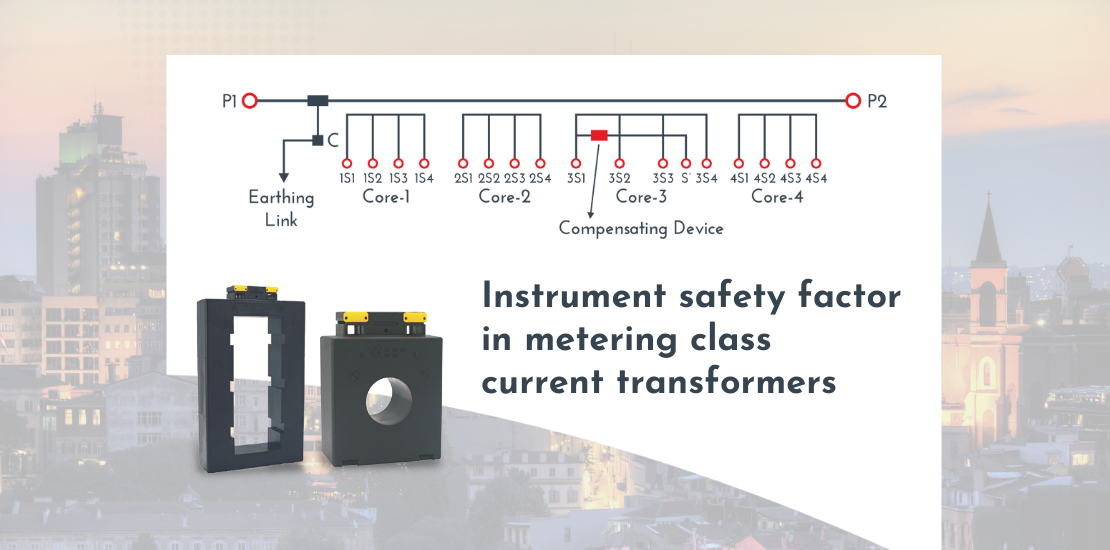- October 7, 2021
- Posted by: Dyaneshwar Nirmale
- Category: Digital Meters

Metering current transformers not only ensure accuracy in power measurement but also protect the meters and other sensitive measuring equipment. A high level of fault current could severely damage the meters. The core of the metering CTs saturates at a specific current level to prevent high current levels from flowing to the meters. The instrument safety factor assigned to the current transformers plays a key role in this action.
What is the instrument safety factor?
The instrument safety factor (ISF) of a current transformer is the ratio of instrument limit primary current (Saturated current) to the rated primary current. The instrument limit primary current is the level of primary current beyond which the CT’s core begins to saturate.
Why ISF is critical
Meters are designed to handle low-value current and are connected directly to the current transformer. Consider that the CT’s ISF value is 5, and a fault current of 6 times the rated primary current value (6 x 2000) flows through the primary side. In such conditions, zero current will flow to the CT’s secondary side because the CT core will saturate at 5 times the rated power. If the current flow is at 4000 A during overload conditions, the meters will still work because the meters are designed to work under a certain amount of overload.
The current transformer ISF factor is defined taking into consideration the overloading capacity of the meter.
What if the CT does not saturate above the denoted ISF?
In the CT does not saturate above the denoted ISF, compensating device is used to achieve the desired safety factor in current transformers. The compensating device forms a parallel path to the connected meter through a high resistance. In case of fault, if CT does not saturate above its ISF (it is most likely to saturate above ISF), then excess current will be shunted through the compensating device. But under normal conditions, the flow of current through the compensating device will be negligible.
In a number of places, current transformers with multiple cores are used. Some of the cores are designated for protection while others for metering. Here, the instrument safety factor is defined for metering cores, and compensation devices are used. For example, the above image shows a multi-core current transformer. Here, core 3 is dedicated to metering while others are for protection. Hence, compensating device is used at this core to ensure adequate instrument safety factors.
